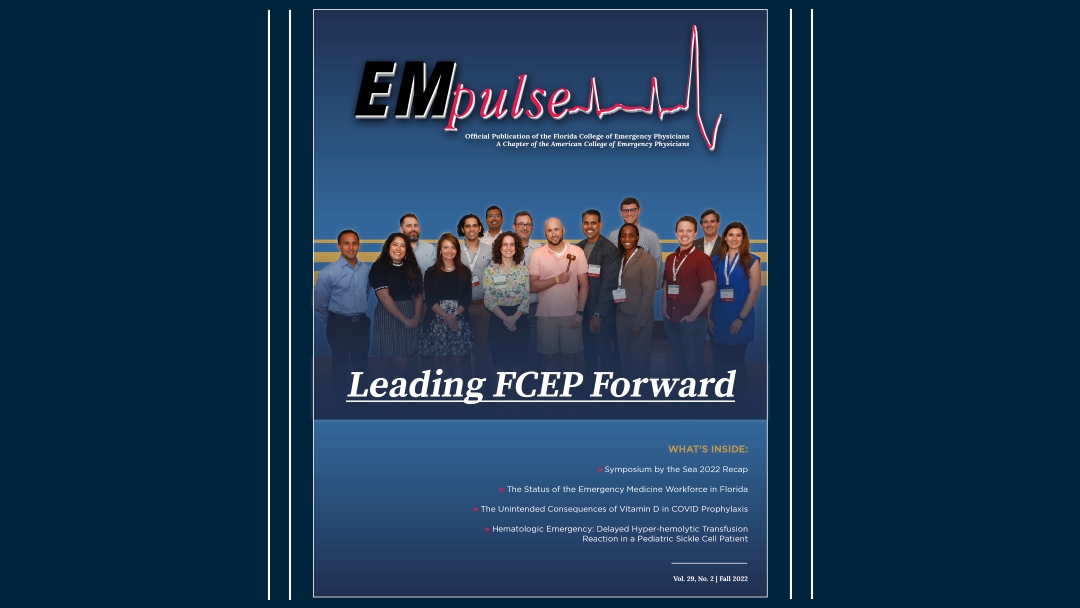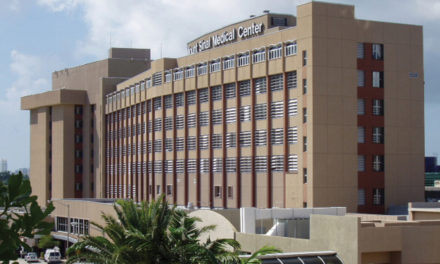The Unintended Consequences of Vitamin D in COVID Prophylaxis
Introduction
In December 2019, a mass outbreak of SARS-CoV2 emerged. Since then, the disease has spread globally, with 613 million cases and over 6.53 million deaths (as of September 2022). [1] SARS-CoV-2 represents a major global health issue with a significant economic, financial, and personal burden. As the pandemic continues to take the lives of millions, many are turning to unapproved health products in an attempt to self-medicate, either due to a lack of access to adequate healthcare, desperation, or rampant misinformation that has been circulating via the internet and social media platforms. [2]
Among these health products, vitamin D has recently been making headlines as a possible tool in SARS-CoV-2 prevention. [3] A recently published retrospective study attempted to examine the relationship between vitamin D levels and the likelihood of testing positive for COVID-19, and demonstrated a possible relationship between higher than normal vitamin D levels with a decreased risk of contracting the disease. [3] Furthermore, it also demonstrated that more than 80% of the patients diagnosed with COVID-19 were vitamin D deficient. [4]
Previous studies have demonstrated that vitamin D supplementation may confer a decreased risk of contracting influenza. [5] With respect to COVID-19, multiple considerations have been given for establishing a causal role in risk reduction. These include the outbreak being more severe in northern climes where serum vitamin D levels are lower, the proven causal relationship between vitamin D deficiency and the development of acute respiratory distress syndrome, and that vitamin D has immunomodulatory effects within respiratory epithelia. [5] It is postulated that the likely protective effects of vitamin D against COVID-19 are related to its ability to temper the proinflammatory cytokine response within the respiratory tract, thus, decreasing the severity of illness caused by COVID-19. [6]
Primary human airway epithelial cells express relatively high mRNA levels of 1a-hydroxylase and lower levels of the inactivating 24-hydroxylase at baseline. [7] Airway epithelial cells constitutively generate vitamin D and respond to pathogens by increasing the machinery needed to convert 25D, the inactive form of vitamin D to 1,25D, the active form. [7] Viral infections may induce expression of 1a-hydroxylase and increase conversion of 25D to 1,25D, which may be of benefit to the host response against the virus. [7] It is believed that the increase in local 1,25D in airways contributes to decreased tissue damage while maintaining viral clearance. [7] Further examination of the role of vitamin D in airway antiviral responses has demonstrated that vitamin D induces IкBa in airway epithelium, which leads to reduced induction of NF-kB driven genes during active viral infection. [8] The end result is decreased secretion of inflammatory chemokines. [8] Finally, in addition to dampening expression of inflammatory chemokines, it has been shown that vitamin D increases the expression of CD14 and cathelicidin which functions in recognizing and eliminating viral pathogens, altering T-Cell activation. [8] Together, this supports that vitamin D potentiates innate immunity while controlling a potentially harmful inflammatory response in the respiratory tract.
Further studies are needed to better define safe dosage, therapeutic range and risk versus benefit analysis of supplementation. [9]
Case Report
A 57-year-old male with a past medical history notable for hypertension and chronic kidney disease, benign prostatic hypertrophy, and gastroesophageal reflux disease, weighing 75kg, presented to the emergency department for significant worsening fatigue, weakness, and decreased appetite over the previous two weeks, with an unexplained 10lb weight loss over the previous two months. His home medication regimen included amlodipine 10mg daily, Flomax 0.4mg, and pantoprazole 20mg. The patient was afebrile on arrival with a blood pressure of 148/84 mmHg, heart rate of 79 BPM, and a respiratory rate of 18. Physical examination was unremarkable. However, laboratory analyses revealed an ionized calcium level of 2.08 mmol/L (reference range: 1.15 -1.30 mmol/L) and calcium level of 17.4 mg/dL (reference range: 8.6-10.3 mg/dL). When questioned further, the patient noted he had been taking anywhere from 20,000-30,000 IU daily of vitamin D for SARS-CoV2 prophylaxis for a duration of greater than eight weeks, after being instructed to do so by a physician in Brazil. He reported his physician had not explicitly recommended a dosing regimen, and that he was simply informed that high doses of vitamin D would prevent him from contracting COVID-19. Further lab studies revealed serum vitamin 1,25D level of 123 ng/mL (reference range: 20-50 ng/mL), parathyroid hormone level of 15, (reference range: 11-51 pg/mL), and phosphorus of 2.4 (reference range: 2.5 to 4.5 mg/dL). Nephrology was consulted due to concern for renal toxicity secondary to hypercalcemia in the setting of CKD. They recommended beginning 4 IU/kg of calcitonin every 12 hours, with repeat calcium levels every 12 hours, and aggressive intravenous fluid hydration at a rate of 250 cc/hr, adjusted as indicated to maintain appropriate fluid balances. Vitamin D supplementation was promptly terminated, and the patient was admitted to inpatient service for further management.
Endocrinology was consulted and noted concern for possible underlying hyperparathyroidism (either primary or secondary due to the patient’s history of chronic kidney disease), that was subsequently worsened by vitamin D toxicity. The patient was ultimately treated empirically with continued aggressive hydration per nephrology’s recommendations, at 250 cc/hr for the first three days of admission, followed by 200 cc/hr for the remaining duration of his admission, and calcitonin 4 IU/kg every 12 hours, terminated at 72 hours to prevent tachyphylaxis. The patient’s calcium steadily improved over his admission, with final discharge 10 days later and a laboratory evaluation demonstrating a calcium level of 11.4 mg/dL (patient’s baseline) just prior to discharge. Of note, patient was ultimately lost to follow-up and unable to be evaluated for whether a component of underlying hyperparathyroidism may have exacerbated his presentation.
Discussion
The most common clinical sequela of vitamin D toxicity (VDT) includes vomiting, abdominal pain, confusion, polyuria, polydipsia, and dehydration. [10] This symptomatic presentation is due to its downstream effect of severe hypercalcemia and hypercalciuria, precipitated by excessive intake. Although VDT is fairly uncommon in the general population, its health effects can be deleterious if not quickly identified and treated. [10]
Humans normally process vitamin D through synthesis in their skin following type B ultraviolet light exposure, and to a lesser extent from dietary sources. It remains stored in the body’s fat cells until needed. When required, stored vitamin D undergoes hydroxylation in the liver to 25-hydroxyvitamin D3 (25D), which is then transported and synthesized into its active form, 1,25-dihydroxyvitamin D3 (1,25D) by the mitochondrial enzyme 1a-hydroxylase, which conventionally occurs in the kidney, before playing a role in a variety of metabolic processes. [9]
With continued consumption of high doses of vitamin D, the negative feedback system which downregulates the hydroxylation of vitamin D is overwhelmed and unable to prevent the development of toxicity. [11] It is believed that as vitamin D binding receptors become saturated, there begins a steady increase in the concentration of vitamin D metabolites. [11] The increased concentration of these metabolites eventually exceeds vitamin-D binding protein (VDBP) binding capacity, causing a release of free 1,25(OH)2D, although it should be noted that the exact mechanism of vitamin D toxicity still remains unknown. [11]
The upper limit of safe consumption, defined as the highest level of daily intake that is likely to cause no adverse health effects over an extended duration in most of the general population for vitamin D3 ranges from 4,000-10,000 IU/d, for both adolescents and adults. [12] Persistent consumption of Vitamin D beyond these levels over a period of several months can lead to chronic hypervitaminosis D and toxicity. Although less common, acute toxicity can also occur. Acute toxicity has been reported within the range of about 600,000-1,680,000 IU per day over a period of several days, with a median lethal dose of about 1,480,000 IU. [13]
Management of hypervitaminosis D is mainly supportive and focuses on treating the resulting hypercalcemia and providing symptomatic relief. Recommendations include discontinuing all vitamin D and calcium supplements immediately, and providing volume expansion using isotonic saline supplementation with a rate of 200-300 cc/hr, that is then adjusted to maintain urine output to 100-150 cc/hr. In cases of severe hypervitaminosis, as seen in this patient, calcitonin and bisphosphonates can be utilized, although calcitonin is the preferred mode of treatment. It is recommended patients are treated with 4 IU/kg every 6-12 hours. Depending on the severity of toxicity, levels may take days to weeks to normalize. During this time supportive treatments should be continued, and calcium levels should be monitored carefully. [10]
Although we report a case of a patient who developed severe hypercalcemia in the setting of acute vitamin D toxicity for the prophylaxis of SARS-CoV-2, it remains unclear whether the administration of vitamin D provided any protective benefits with regard to respiratory health. The lack of appropriate guidelines for the off-label use of vitamin D as SARS-CoV-2 prophylaxis led to the development of VDT and severe hypercalcemia, which if had been left untreated, could have led to devastating consequences. The patient required a long 10-day admission before achieving normalization of his lab values, representing a great financial, nosocomial infection, and personal burden. With increased public awareness of the immune benefits and possible use of vitamin D as a respiratory protectant, the risk and incidence of vitamin D toxicity due to self-administration in doses significantly higher than recommended may become more common.
Conclusion
This case clearly identifies the need for development of vitamin D related recommendations with respect to COVID-19 prophylaxis, especially given its widespread use and ease of availability. Both providers and patients need to be better educated regarding the risks and benefits of vitamin D supplementation in the prevention of COVID-19. With continued research, investigation, and guidelines targeting vitamin D supplementation in the prevention of COVID-19 future cases of VDT may be averted. ■
References
- Covid-19 map. Johns Hopkins Coronavirus Resource Center. Accessed February 8, 2021.
- Omokhua-Uyi AG and Van Staden J. Natural product remedies for COVID-19: A focus on safety. South African Journal of Botany. 2021;139:386-398.
- Meltzer DO, Best TJ, Zhang H. etl.al, Association of Vitamin D levels, race/ethnicity, and clinical characteristics with COVID-19 test results. Yearbook of Paediatric Endocrinology. 2021.
- Rubin G. Vitamin D deficiency may raise risk of getting COVID-19. UChicago Medicine. Published September 3, 2020. Accessed September 3, 2021.
- Kow CS, Hadi MA, Hasan SS. Vitamin D supplementation in influenza and covid-19 infections comment on: “evidence that vitamin D supplementation could reduce risk of influenza and COVID-19 infections and deaths” Nutrients. 2020;12(6):1626.
- Murdaca G, Pioggia G, Negrini S. Vitamin D and COVID-19: An update on evidence and potential therapeutic implications. Clinical and Molecular Allergy. 2020;18(1).
- Adams JS, Sharma OP, Gacad MA, et.al, Metabolism of 25-hydroxyvitamin D3 by cultured pulmonary alveolar macrophages in sarcoidosis. Journal of Clinical Investigation. 1983;72(5):1856-1860.
- Fritsche J, Mondal K, Ehrnsperger A, et.al. Regulation of 25-hydroxyvitamin D3-1α-hydroxylase and production of 1α,25-dihydroxyvitamin D3 by human dendritic cells. Blood. 2003;102(9):3314-3316.
- Hansdottir S, Monick MM, Hinde SL, et.al. Respiratory epithelial cells convert inactive vitamin D to its active form: Potential effects on host defense. The Journal of Immunology. 2008;181(10):7090-7099.
- Tebben PJ, Singh RJ, Kumar R. Vitamin D-mediated hypercalcemia: Mechanisms, diagnosis, and treatment. Endocrine Reviews. 2016;37(5):521-547.
- Asif A. Vitamin D toxicity. StatPearls [Internet]. . Published April 29, 2021. Accessed March 15, 2021.
- Hansdottir S and Monick MM. Vitamin D effects on lung immunity and respiratory diseases. Vitamins and the Immune System. 2011:217-237.
- Vitamin D3 toxicity (LD50): AAT Bioquest. Vitamin D3 Toxicity (LD50) | AAT Bioquest. . Accessed October 5, 2021.






